45 ways to celebrate Historic Preservation Month, May 2016
May is designated by the National Trust for Historic Preservation as Preservation Month and many state and local preservation groups organize events and programs during the month to call attention to historic preservation and its positive impact on communities.
-- Preservation Month 2016
This post is updated and expanded annually, to encourage us to acknowledge and celebrate historic preservation, ideally not only during Preservation Month but throughout the year, by pointing out things that we can see and do throughout the month and beyond.
A preservation organization in Snohomish, Washington marching in a local parade.
Preservation Month aims to encourage increased engagement by supporters, and to reach broader audiences, in communicating the message that preservation is essential to community vibrance, identity, and quality of place. The National Trust suggests using its "This Place Matters" promotion program as a way to draw attention to historic properties.
Some organizations do a much better job of organizing activities throughout the month than others. Agencies that stick out positively include the State of Indiana Historic Preservation Office and the City of Boston Landmarks Commission.
Bringing media attention to preservation. It's also a great opportunity to try to engage local media on preservation topics.
For example, the statewide preservation group Indiana Landmarks releases their list of most threatened resources just before the onset of Preservation Month, as a way to get publicity and draw attention (see "Indiana Landmarks names '10 Most Endangered' sites for 2014," Indianapolis Star, "A new pastime: Preservation Month brings plenty of events in May in Southern Indiana," Jeffersonville News and Tribune).
(On the other hand, you can argue that releasing a list of endangered properties at another time of year may bring additional publicity to the cause outside of the May period when more attention is likely to be focused.)
50th anniversary of the National Historic Preservation Act. This year is the 50th anniversary of the National Historic Preservation Act, which was passed in 1966, spurred by public protest against the impact on existing neighborhoods from urban renewal and highway construction projects, "undertakings" funded for the most part by the federal government.
-- Preservation 50

Things to do
1. Become a member of your citywide/countywide/regional preservation organizations such as the DC Preservation League, the Municipal Arts Society in New York City, Baltimore Preservation, Historic Districts Council in New York City, Cleveland Restoration Society, Preservation Resource Center of New Orleans, Landmark Society of Western New York (which serves Rochester, among other places), etc.
2. Before you get too involved, you might want to take the time to read your city, county, or state historic preservation plan. This will educate you about preservation issues in your area.
In order to implement the provisions of the National Historic Preservation Act, the National Park Service was tasked with the responsibility of working with states to create a process for designating resources for the "National Register of Historic Places." All states have historic preservation offices to coordinate efforts at the state level. And in order to be "certified" at the state and local level--this means that the agency is eligible to use federal historic preservation funds--the entity has to have a plan.
However to fully protect historic resources, you need local laws and regulations. Note that something that many people find confusing is that the federal law only concerns federal undertakings--federally-owned buildings (the Post Office is exempt) and federal programs spending money locally (like aging programs or road and transit projects).
Getting national recognition from the National Register of Historic Places for a local historic district isn't enough to protect resources from local, state, or private action. Separate local laws are required.
 3. Join a neighborhood/local preservation group, such as in DC the Capitol Hill Restoration Society, Historic Takoma, or Historic Mount Pleasant).
3. Join a neighborhood/local preservation group, such as in DC the Capitol Hill Restoration Society, Historic Takoma, or Historic Mount Pleasant).4. Nationally, you can join the National Trust for Historic Preservation while you're at it. If you join, you can visit NT owned sites and affiliate organization museums at a discount/free, get discounts at Historic Hotels, and discounts on products you purchase.
5. Preservation Action is a 501(c)4 advocacy group that advocates for specific legislation and is also a membership group. Their "Preservation Advocacy Week" is held in March, where members lobby Members of Congress for legislation favorable to preservation.
6. And at the state level, most states have statewide preservation organizations. In the DC-VA-MD area, that means Preservation Maryland and Preservation Virginia/Association for the Preservation of Virginia Antiquities, as well as the DC Preservation League. Many sponsor annual or bi-annual conferences, journals, and other provide other resources.
I am always impressed by the quality of the annual conference of Colorado Preservation. (The Saving Places Conference is in February, so we missed it.)
So join your statewide group.
7. Volunteer/1. Get involved in a preservation issue in your neighborhood or the city-county at large, which could include attending meetings of your local historic district/preservation commission, which in DC is the Historic Preservation Review Board, or working on a particular project affecting your neighborhood or city.
Issues common to many communities are inadequate protections for "old" buildings that may be historic but not necessarily designated (e.g., "Boston-area towns seek ways to slow razing of historic homes," Boston Globe) and teardowns, where older smaller houses are bought solely for the opportunity to build a new and bigger house on the same property ("Demolition Derby: As high-dollar houses crowd onto tiny lots, teardown fever is sickening neighborhoods across Nashville ," Nashville Scene) which is likely well located. This is an increasing problem in high value real estate markets, and less of an issue in weak real estate markets.
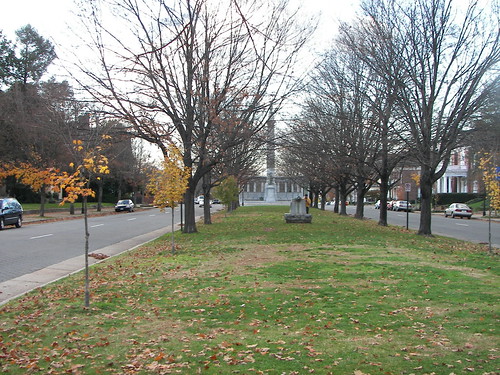
Median, Monument Avenue, with a monument in the background.
Another example is in Richmond, Virginia, where the Save our Statues organization is focused on restoring and maintain the city's statues, for example, those along Monument Avenue. See the article from the Richmond Times-Dispatch.
8. Volunteer/2, in a traditional commercial district revitalization initiative. A "division of the preservation movement" is the Main Street commercial district revitalization program, which links economic development with historic preservation focused on the revival of local commercial districts and downtowns in smaller communities.
There are affiliates in every state, in many provinces in Canada, and in other countries as well. In the DC region, Maryland and Virginia have state level programs--Baltimore's program at the city level is independent of the state program, and there are a number of Main Street programs in DC.
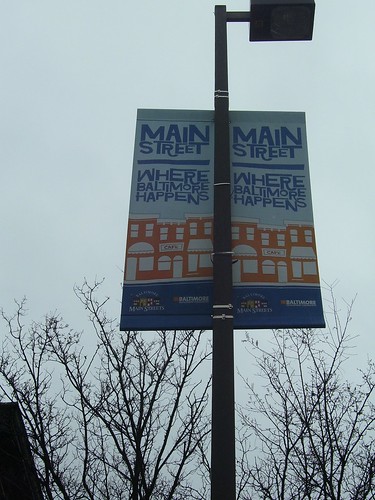
The Main Street Approach is ground up, where residents and other stakeholders join in with merchants and property owners to work on improving the commercial district overall. Typically, programs have a manager and may have additional full-time or most likely, part-time staff. It's volunteer.
Note that big downtowns and large business improvement districts tend to be members of the International Downtown Association, and are more focused on clean and safe activities and tend to be run by full-time staff, although in some cities such as San Diego, many of the business improvement districts are run using the Main Street Approach.
In my experience, interestingly, volunteers in Main Street programs tend to be 10-15 years younger than those in traditional preservation organizations, and the most active Main Street volunteers tend to live closest to the commercial district.
This makes Main Street commercial district revitalization programming a tremendous opportunity to draw new and younger audiences to the preservation movement.
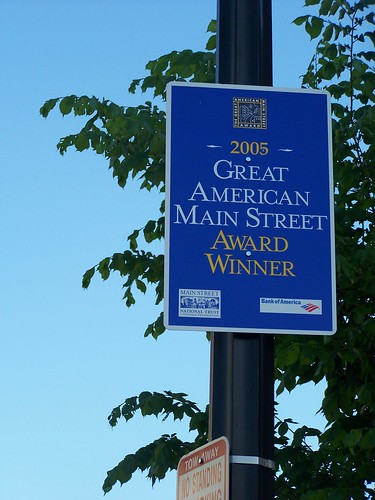
There are more than 1200 Main Street programs around the county, including active programs in every state. In 2012, H Street Main Street in DC was designated a "Great American Main Street." Barracks Row--8th Street SE--won the designation back in 2005.
The 2016 conference will be held during Preservation Month, May 23-25, in Milwaukee, Wisconsin.
9. See a movie in a historic cinema building. There aren't many historic cinemas in DC proper any more, but the Uptown Theater in Cleveland Park is one.
A few years ago, we had a blast seeing a midnite film at the Byrd Theatre in the Carytown district in Richmond. And I loved how the Lincoln Theatre in DC showed "The Girl with the Dragon Tattoo" in December 2011.
-- League of Historic American Theatres
10. See a theatrical production in a "legitimate" historic theatre. You have many choices in the DC area such as the Warner, the National, the Studio Theatre, the Lincoln Theatre, the Shakespeare Theatre at the Landsburgh, the Atlas Performing Arts Center (which utilized federal historic preservation tax credits to pay for a portion of the building's rehabilitation), and sort of kind of the Tivoli Theatre in Columbia Heights.
Lido Theater, Palm Desert, California.
Note that the Pittsburgh Cultural Trust and the Cleveland Theater District Development Corporation programs to revitalize their respective interest areas through rehabilitation and operation of historic theatre buildings has been vital and central to revitalization efforts in those communities. See "Playhouse Square stars in its own real estate revival" from the Cleveland Plain Dealer.
Fisher Theatre in 1970, a few years after I first attended a children's theater production there.
Of course, there are hundreds of such arts-based revitalization efforts, mostly on a much smaller scale, across the country. One of my first such experiences was as a child seeing a play in the historic Fisher Theatre in Detroit's Fisher Building.
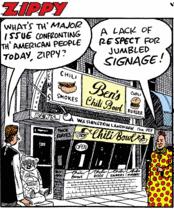 11. Shop at stores in commercial districts that are historically designated: i.e., Cleveland Park; Georgetown; Capitol Hill; Dupont Circle in DC, but there are so many across the country.
11. Shop at stores in commercial districts that are historically designated: i.e., Cleveland Park; Georgetown; Capitol Hill; Dupont Circle in DC, but there are so many across the country.12. Eat in a restaurant in a historic building/historic district. It's not that old, only 56 years, but Ben's Chili Bowl is one of the few remaining restaurants in the city that is truly old... Readers have suggested Martin's Tavern in Georgetown and Cafe Mozart, a German restaurant downtown.
Interestingly, the Larimer Square commercial district in Denver assesses a 1% sales tax surcharge, called a Historic Preservation and Restoration Fee, to fund physical improvements in that district. It's a special purpose district that is a variant of what the State of Colorado calls "Metropolitan Districts."
13. Even if you're an atheist, it can be fun to visit a historic church building, including checking out their stained glass windows (I am a big fan of stained glass).
The Fifth Avenue Presbyterian Church in Manhattan/New York City often has its doors open when the choir is practicing. Many churches offer tours or special concerts.
If you want to learn more about church architecture, a good place to start is with the book, THE CHURCH BUILDING AS A SACRED PLACE: Beauty, Transcendence, and the Eternal.(Review of the book from the Imaginative Conservative blog.)
14. Explore an older area of your community that you don't know. Go on a neighborhood or building tour. Check out a talk (not all of them cost money) at the National Building Museum.
Or just walk around a neighborhood with housing built before 1930. Walking here and there around the core of Takoma Park, Maryland, we are come across attractive and unique houses.
15. Many preservation groups sponsor neighborhood house tours. On Sunday May 1st is the tour in Takoma Park (on the Maryland side). The weekend after is the house tour in Capitol Hill, on May 7th and 8th. There are others throughout the year in neighborhoods across the city and region.
On Saturday May 15th, the Frank Lloyd Wright Preservation Trust in Oak Park, Illinois, holds its annual House Walk tour/fundraiser.
16. Shop at a historic public food market. Eastern Market is DC's last remaining public food market building, built in 1873. (Union Market is privately owned, and was constructed in the 1970s.)
There are many great markets around the country, including the Eastern Market food district in Detroit, the Italian Market and the Reading Terminal Market in Philadelphia, the Farmers Market and Grand Central Farmers Market in Los Angeles, Pike Place Market in Seattle, the Indianapolis City Market, Lancaster Central Market in Lancaster, PA, the York Public Market in York, PA, West Side Market in Cleveland, etc.
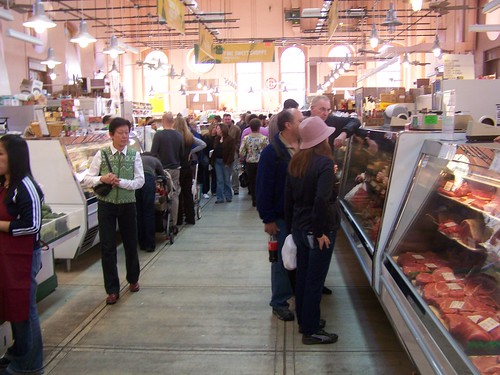
Eastern Market in Washington DC
17. Check out the history resources at your local library or a specialized collection such as in DC at the Washingtoniana Collection at the Martin Luther King Central Library or the Peabody collection at the Georgetown Branch, the Kiplinger Library at the Historical Society of Washington, the Jewish Historical Society, or the Moorland-Spingarn Collection at Howard University. Many city libraries have history collections.
18. Learn about the history of your community. For example, for DC, read Dream City: Race, Power, and the Decline of Washington, D.C., 1964 -1994 and Between Justice and Beauty, and more.
In DC, knowing about the original L'Enfant Plan and follow up planning by the McMillan Commission, allows you to understand the antecedents of the city, and make better land use decisions going forward, for your neighborhood and for the city.
 Start with Washington in Maps by Iris Miller and Washington: Through Two Centuries by Joseph Passonneau. And see "Washington: Symbol and City," a permanent exhibit at the National Building Museum.
Start with Washington in Maps by Iris Miller and Washington: Through Two Centuries by Joseph Passonneau. And see "Washington: Symbol and City," a permanent exhibit at the National Building Museum.Many regional university presses publish books on local history and architecture that are well worth reading. For example, the Wayne State University Press published a fabulous book on railroad stations, Michigan's Historic Railroad Stations.
The book, by Michael Hodges, doesn't have an extensive section of introductory text, but what's there is golden--a succinct discussion of public space and the importance of railroad stations in the civic realm, and a good survey of the key texts in the field.
Johns Hopkins University Press (catalog on railroads, regional interest, including architecture) and the University of Chicago Press (architecture) both have extensive publishing programs on history and architecture, with many many excellent items. So do the MIT Press and Princeton Architecture Press.
History Press and Arcadia Publishing Company have extensive publishing programs on community history.
19. Learn about why historic preservation is important, in and of itself, as well as a urban revitalization strategy. The reason I am a strong supporter of preservation is that I have come to believe that hands down, it is the only approach to economically sustainable neighborhood and commercial district revitalization that works for the long haul.
Hands down though, the best speech on the power and centrality of beauty and historic preservation in civic life is that by Mayor Joseph Riley of Charleston, SC.
Probably the best two books to read are Cities: Back from the Edge and Changing Places, in terms of getting up to speed on the issues quickly without having to read dozens of other tomes.
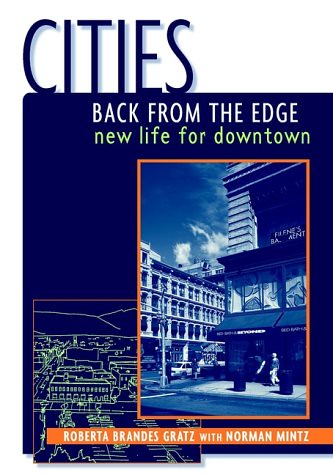 If you want to get into more detail, I suggest reading some of the work by Donovan Rypkema, such as his speeches, including "Culture, Historic Preservation and Economic Development in the 21st Century" and "Economic Power of Preservation," and his report on the economic value of preservation for New York, New York: Profiting through Preservation.
If you want to get into more detail, I suggest reading some of the work by Donovan Rypkema, such as his speeches, including "Culture, Historic Preservation and Economic Development in the 21st Century" and "Economic Power of Preservation," and his report on the economic value of preservation for New York, New York: Profiting through Preservation.Note also that these reports from the University of Florida Law School's Center for Government Responsibility are also excellent: Economic Impacts of Historic Preservation in Florida, Update 2010 (Research Report: Executive Summary; Technical Report) Contributions of Historic Preservation to Quality of Life in Florida (2006) (Executive Summary; Technical Report); A Florida Boon: Historic Preservation (Research Report: Executive Summary; Research Report: Technical).
20. Another way to learn a lot but very quickly is to attend a preservation conference such as the annual meeting of the National Trust for Historic Preservation (this year it's in Houston, Texas starting November 15th) and the National Main Street conference.
Many other areas have great preservation conferences but not in May, such as the state conference in Colorado, usually in February, and the conference of the Landmark Society of Western New York.
21. When you visit other places, check out how they deal with historic preservation matters, and share that learning when you come back. For example, every fall, Pasadena Heritage sponsors Craftsman Weekend, in honor of its bungalow heritage.
Many communities have organized walking tours for historic areas. Some print booklets for self-guided tours and these days, many places have smartphone tour apps.
In New York City, the Municipal Arts Society offers tours. In Chicago, the Chicago Architecture Center is a staging point for tours. In San Francisco, the City Guides organization provides free tours led by volunteers.
22. Read a historic district brochure (or more than one). In DC, they are available online or in hard copy at the Historic Preservation Office. Many communities produce and publish these kinds of publications. Two of the best I've ever read is one on Jefferson County Indiana including Madison (One of the first Main Street communities) and Hanover, and the other on the Kansas City public market, called City Market. Both lay out their respective histories chronologically but thematically.
I am a big fan of reading the design guidelines publications produced for cities or neighborhood historic districts, which describe local historic districts, such as those from Montgomery County Maryland, Richmond, Virginia, Roanoke, Virginia, and the Philadelphia Rowhouse Manual.
The Roanoke Virginia Residential Pattern Book is a stand out!
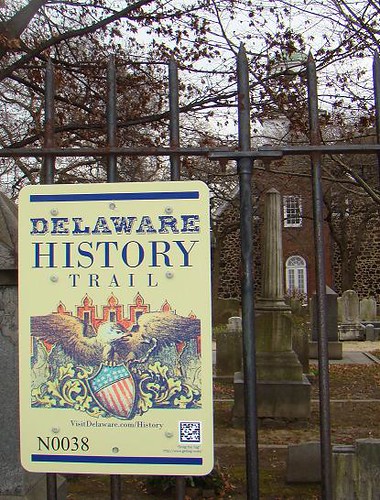 23. Follow the path of a Heritage Trail such as one of the many "produced" by CulturalTourismDC in DC.
23. Follow the path of a Heritage Trail such as one of the many "produced" by CulturalTourismDC in DC.A growing number of communities have similar kinds of interpretation programs. Richmond has introduced a trail on slavery, which obviously, given that we are celebrating the sesquicentennial of the start of the Civil War, is particularly
relevant and a good opportunity to reflect on our past,
Richmond's Liberty Trail links historic neighborhoods, sites, and attractions. (They got the idea from Boston's Freedom Trail, which more specifically focuses on sites and places significant to the American Revolution.)
Delaware has a state-wide history trail.
And many states and heritage areas are creating trail programs such as a whiskey trail in Kentucky, a blues trail in the Mississippi River Delta, food artisan trails, etc.
24. Take a walk or bicycle ride (or drive...) along a historic trail, road, railroad, canal, or greenway.
The C&O Canal Trust has restored some of the canal lockmaster quarters, which people can stay in.
-- Great Allegheny Passage (biking)
-- National Scenic Byways Program
In Passaic County, NJ, the Transportation Plan first raised the idea of treating historic transportation corridors as opportunities for historic interpretation and cultural tourism, and the county has further developed the concept as part of the county's Heritage Tourism Plan.
25. Visit a historic cemetery. In DC, we have the Congressional Cemetery or the Rock Creek Church Cemetery at St. Paul's Episcopal Church, among others. Brooklyn's Greenwood Cemetery is a standout. Some cemeteries offer tours.
26. Visit a heritage area/heritage park. The concept of state or nationally designated "heritage areas," based on the organizing framework of the cultural landscape, addresses heritage preservation and cultural interpretation over a large district sharing a common identity, history, and theme.
The Alliance of National Heritage Areas is a support organization for state and nationally-designated heritage areas.
Map of heritage areas in New York State.
Separate from the federal program of National Heritage Areas, which are designated by Congress (so it can be a somewhat political process), many states have their own programs. Some, like Maryland or Pennsylvania, call them "heritage areas," while certain states like Connecticut call them "heritage parks."
Baltimore started out with a state-designated heritage area -- and I've argued that DC should use the heritage area concept as an organizing tool to manage and present the city's cultural resources -- that later was designated as a national heritage area.
One of the newest heritage areas/parks is the Thames River Heritage Park in Connecticut, promoting and linking cultural sites in Groton and New London, which are across the river from each other, and home to many great sites, shopping districts, etc.
This summer they will be inaugurating water taxi service for visitors wanting to see sites on both sides of the river.
-- Thames River Heritage Park Master Plan

27. Explore historic preservation matters in your region, beyond the borders of your community.
Not quite two miles from DC is the Bladensburg Waterfront Park in Bladensburg, Maryland.
Reflect about when this was a major port, when tobacco was king, and DC was still part of Prince George's County, Maryland. They offer river rides on the weekends, including a jaunt into DC to the National Arboretum.
In Prince George's County, the Historic Hyattsville (Maryland) house tour is Sunday May 15th.
Silver Spring, Maryland has a historic trail marker system too. It is being constructed over time, but a number of the markers are in place now, and the didactics on the signs are excellent. If you like Vietnamese food, one of the markers is just a couple doors down from a Vietnamese restaurant, across the street from the B&O Railroad Station, at the southeast corner of Georgia Avenue and Sligo Avenue.
Prince George's County has an extensive inventory of historic sites that are open to the public, etc.
28. Check out an exhibit at a local history museum or historic site, such as at the Anacostia Community Museum or the Historical Society of Washington or one of the other house museums and historic sites in the city and region.
The Pittsburgh History Center, the New-York Historical Society, Museum of the City of New York, the Jamestown Experience, the Brooklyn Historical Society, the Valentine History Center in Richmond, among others, are great local museums that are definitely worth a visit.
29. Encourage your friends to stay at a historic hotel in the city or a bed and breakfast located in a historic district. For example, the Tabard Inn in the Dupont Circle Historic District is one of the most romantic places in the city to have weekend brunch--out on the patio, during the spring, summer, and fall.
 I'm a big fan of the Priory Inn (Flickr photo by Two Ks) in Pittsburgh, which is in the Northside district, but an easy walk over the river into Downtown, near various Northside cultural institutions (and football and baseball if you're into that), etc.
I'm a big fan of the Priory Inn (Flickr photo by Two Ks) in Pittsburgh, which is in the Northside district, but an easy walk over the river into Downtown, near various Northside cultural institutions (and football and baseball if you're into that), etc. Kennedy School in Portland, Oregon is a B&B in a former school, etc.
The National Trust for Historic Preservation has an affinity group, Historic Hotels of America, which is a collection of particularly distinctive and historic hotel properties.
But the Standard Hotel in Los Angeles isn't a traditional historic hotel--it is remade from an office building constructed during the art deco area for an oil company--and it's very cool!
In short, look for hotels in historic buildings, whether or not they are specifically "historic hotels." But remember, NTHP members can get discounts on rooms at HHA properties.
VRBO.com -- Vacation Rentals by Owners -- is a great site for finding places to stay in neighborhoods, including historic districts. Not only do you more directly support the local economy (typically, hotels are owned by noncity interests and most of the room rental revenue doesn't stay local), but you can--if it's your way--have a much better, more local experience.
As examples, we've stayed in a house on Forsyth Park in Savannah, a rowhouse in North Beach in San Francisco, and a basement apartment in Capitol Hill in Seattle and for all intents and purposes, we got to experience those places much more like local residents.
30. Walk the historic grounds of a local college or university. In DC, Catholic University, Trinity, Georgetown, Howard, and Gallaudet have beautiful grounds and buildings. Kendall Green at Gallaudet was designed by Frederick Law Olmsted.
Note that I wish colleges would focus on this more than they sometimes do. Howard University in DC has a beautiful campus, but you'd never know as it is tucked behind Georgia Avenue with few attempts to draw people inward to the campus. (Recently, the National Trust has set up an initiative with Howard to assist them in preservation and rehabilitation of their historic properties.)
31. Check out a monument or memorial in your community and learn more about it. We can't preserve what we don't understand or appreciate.
Over the past year, greater attention has been paid to monuments in honor of people associated with the Confederate cause with a demand that a more nuanced interpretation be provided, or that monuments be moved from prominent public locations ("What to do with Confederate monuments," Chicago Tribune).
32. Go see a museum exhibit relevant to urban history, even if it's on a seemingly broader topic. At the National Museum of American History, the exhibit on transportation history, "America on the Move" is superb.
Part of that exhibit uses Washington as an example specifically. But in any case, it explains the role of transportation in urban and regional development, and will give you a lot of insight into these issues as they relate to any region.
33. When we travel, we like to visit house museums. For example, the Woodford Mansion in Philadelphia is really cool, and Savannah has many different house museums that you can visit, the most notorious being the Mercer-Williams House. Most cities have at least one. Los Angeles has just reopened the Hollyhock House.
34. Visit a local railroad or bus station, such as DC's Union Station. Designed by Daniel Burnham, it's an incredible example of the City Beautiful architectural movement. Check out chapters from Bill Wright's dissertation on Union Station. He's a great writer!
Terminal Town is a fascinating book discusses in brief all of Chicago's transportation terminals--including bus stations, interurban stations, and airports.
2013 was the 100th anniversary of Grand Central Station in New York City, and in Chicago, Denver, and Los Angeles new master planning and/or construction improvement projects for stations in those cities are underway.
But there are many fabulous extant railroad stations, many no longer in use, in so many cities.
Greyhound, the inter-city bus company, was known for in the 1940s and 1950s, the construction of dynamic bus terminals featuring art deco/streamline design.
Savannah's Greyhound Bus Terminal has been transformed into a sleek restaurant ("How a Greyhound station in Savannah became a hit new restaurant," Washington Post).
35. Ride a passenger rail train. Ride a passenger railroad (commuter) train. In the DC region, that means MARC or VRE. In Greater New York, New Jersey, Philadelphia (SEPTA), Chicago, and Boston (as well as Toronto and Montreal), Southern California, Northern California and elsewhere commuter railroads provide passenger rail services once provided by private railroad companies.
The Norfolk Southern Railroad, in association with the Tennessee Valley Railroad Museum, is running steam engine passenger train excursions in various places on their system.
(Union Pacific has decided to restore a steam locomotive--it will take some time--and run similar kinds of excursions beginning in 2019, which is the 150th anniversary of the driving of the "Golden Spike" and the creation of a transcontinental railroad system. See "Big Boy steam engine to start journey to Wyoming on April 28" from the Los Angeles Times.)
Amtrak's National Train Day is one way to acknowledge and celebrate railroad history and passenger train service.
36. Ride a historic railroad excursion train/visit a railroad museum. Of course, there are many special scenic railroad organizations and other riding opportunities too. Children really love these experiences.
-- Tourist Railway Association
Perhaps the most prominent example is the railroad from Williams, Arizona to the Grand Canyon, the Grand Canyon Railway. The trains used to be powered by steam locomotives, but they switched to diesels to reduce negative environmental impact.
The Illinois Railway Museum runs trains and streetcars on its site, including the art deco/streamline designed Nebraska Zephyr, of the Chicago, Burlington and Quincy Railroad.
Nebraska Zephyr. Arlington (IL) Daily Herald photo.
-- list of railroad museums
-- Association of Tourist Railroads and Railway Museums
37. Visit a streetcar museum. Many communities have streetcar/transit museums such as the Baltimore Streetcar Museum and the National Capital Trolley Museum in Montgomery County, Maryland in this area. So try to ride a historic streetcar as well.
Photo of a Kenosha streetcar by Brian Gardner.
38. Ride a streetcar system in active service. Some places run heritage streetcars in active service. Everyone knows about the streetcars in New Orleans (and that system continues to expand in bits and pieces).
But historic/"old" streetcars run in many places in regular service: Boston; Dallas; Kenosha, Wisconsin; Little Rock; Memphis; Philadelphia; San Francisco; Tampa, Toronto (they date to the 1980s); etc.
San Francisco has two different options, the cable cars, which are a designated National Historic Landmark, and the F Line (the Market Street Railway) streetcar service, which is run with historic streetcars painted in the liveries of various different historic streetcar operations from the US and Europe. Membership in the group entitles you to their quarterly newsletter, which is fabulous.

Cable car in San Francisco. Flickr photo by Jon Robson. Cable cars are mostly a tourist attraction, but depending on where you live and work in the city, they are also a working element of the public transit system.
(The service in Little Rock had been under threat from a proposed freeway expansion. See "Arkansas' capital city divided over interstate widening plan," Associated Press. But highway officials backed off after public outcry.)
Not to mention new streetcars such as in Portland, Tacoma, Seattle, etc. Memphis re-created part of its historic trolley system, which runs Downtown and in the riverfront district, in 1993.
And note that the South Shore Line, an active transit service connecting Northern Indiana to Chicago, is the nation's only extant interurban railroad service--there once hundreds of such systems across the country, but their moment as an elemental mode in the transportation system was brief, snuffed out by the combination of the rise of the automobile and the Depression.

South Shore Line train in Michigan City, Indiana. Flickr photo by Tony Lau.
39. Visit a national or state park. DC, for obvious reasons, has many nationally owned parks, the system of Fort Circle Parks works to preserve the forts built during the Civil War to protect the city from Confederate invasion. Fort Stevens, hidden behind a church on Georgia Avenue, around Quackenbos Street NW, was attacked by Confederate forces, and President Lincoln was up there and watched. Up Georgia Avenue a bit, close to Walter Reed Hospital, is a somewhat forlorn and neglected battlefield cemetery and monument honoring soldiers who died at the battle at Fort Stevens.
-- National Park Service, find a park
-- America's State Parks
This year is the 100th anniversary of the US National Park System.
40. Check out a historic school building and work to preserve historic schools. The DC Public School system has an archives and museum that is also a meeting center, Sumner School, at 17th and M Streets NW.
And work to ensure that historic school buildings are preserved in your community. Sprawl-supportive building accreditation standards for school buildings push the concept of larger campuses served by school buses.
-- Historic School Preservation help page, NTHP
-- Why Johnny Can't Walk to School: Historic Neighborhood Schools in the Age of Sprawl, NTHP
-- Helping Johnny Walk to School: Policy Recommendations for Removing Barriers to Community-Centered Schools, NTHP
41. Check out a historic library building. Many cities have great library buildings that now qualify as historic.
Pictured at left, the Handley Memorial Library in Winchester, Virginia is particularly grand.
A number of DC's libraries were built with support from the Carnegie Foundation (Northeast, Southeast, the old Carnegie Library downtown, Takoma, and Mount Pleasant, which is particularly gorgeous) as were more than 2,000 other libraries elsewhere in the US.
42. Take a boat trip on a local river. The pontoon boat tours of the Anacostia River leaving from the Bladensburg Waterfront Park (in Prince George's County) dip into DC.
Boston, Seattle, New York City, and San Francisco have working passenger ferry systems. The Staten Island Ferry is working transit that's free and is a fun trip.
Many cities have water-based tours or smaller scale water taxi systems as well.
43. If you own "an old house," and want to learn more about historically sympathetic renovation, why not subscribe to magazines such as Old House Journal, Old House Interiors, American Bungalow, This Old House, etc.
You learn about historic architecture and details. They run features on interesting neighborhoods, places you can try to see when you travel. And the magazines offer good ideas of how to make historically appropriate changes in your own house.
(These magazines, and regional shelter magazines like Southern Living and Sunset are also good sources for historically-related travel, including historic district neighborhoods across the country.)
I hadn't been interested much in "the decorative arts" and interiors of houses all that much before, but having moved into a 1929 bungalow that was relatively intact, and including a 1930s Magic Chef Oven, I've become much more attuned and interested.
But it's also important to acknowledge the preservation movement for houses (and buildings) of the recent past. Publications focusing on that era include Modernism, Atomic Ranch, and Midcentury Magazine from the UK.
44. Publications on maintenance of historic houses. Some historic preservation organizations publish good guides to maintaining "old houses." The Capitol Hill Restoration Society has published a number of bulletins on the architectural elements of neighborhood housing.
The Homeowner's Handbook to Historic Houses published by the Historic Macon Foundation has a chapter on "The Deterioration Cycle of Historic Homes," which explains the sub-systems (roof, exterior walls, etc.) within a house, the materials these sub-systems are constructed from, and how, with use and exposure to weather, they deteriorate. It's followed by chapters on maintenance and historic preservation incentive programs unique to Georgia.
Similarly, the Historic Chicago Bungalow Association publishes Bungalow Maintenance 101. Manitoba's Heritage Building Maintenance Manual is excellent too. Rehab Rochester is out-of-print, but available via archive.org.
The State of Ohio Historic Preservation Office sponsors a program called "Building Doctor," which holds "clinics" around the state, where they provide training on maintenance issues and do evaluations of specific houses that have been prearranged by appointment. See "'Patients' receive old-home remedies" from the Cincinnati Enquirer.
The SAUGANASH WORKBOOK: A Guide for Building and Renovating in Sauganash is a community design guide for a historic neighborhood where many of the already large houses are targets for large-scale renovations and expansions. The guidebook aims to help people design
45. If you have children in your life, how about doing an activity with them that is architecture-preservation related?
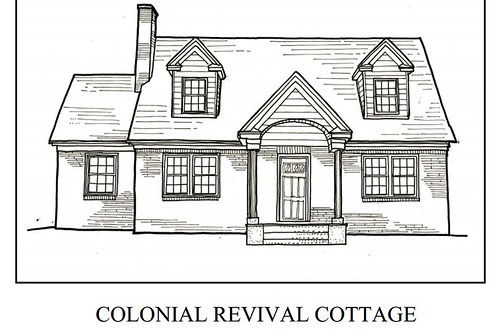 Many preservation organizations have produced coloring pages or books for children as well as offer educational activities.
Many preservation organizations have produced coloring pages or books for children as well as offer educational activities.The Architectural Styles Coloring Book from Roanoke is very good. Perhaps there are similar kinds of houses in your community and you could do a field trip to houses with similar styles, and then the child could color the pages.
-- Architecture for Young Children webpage, Pittsburgh History and Landmarks Foundation
46. What suggestions do you have?
Labels: civic engagement, cultural heritage/tourism, historic preservation, urban history


















11 Comments:
Archibald Walk and the small houses are a big feature of this year's CHRS home and gardens tour please join us this Mothers Day weekend
Your blog is awesome..You have clearly explained ...Its very useful for me to know about new things..Keep on blogging.
Seo training in Chennai
You blog is informative. thanx for the article.
Need it support. Contact us.
https://creativetechpark.com/
Our Main Services are Dfw Limo Service, Airport Limousine Service, Wedding Limousine, Bachelor & Bachelorette Party, Night Out, Corporate Limousine, Special Events, Sight Seeing, Prom Nights Limousine entire Dfw metroplex area.
Contact us now for book a Limousine @ +1 972 594 9291 any time 24 hours a day.
Website Design Company in Bangladesh - Creative Tech Park Dhaka BD is the Ultimate Web Design and Development Company Bangladesh to Ensure Creative Technology all over the world with full customer satisfaction than ever. Best web site design company to develop your web page design and custom website package with top graded SSD web hosting and website domain name registration with an affordable price.
Himu IT is the best Website design company in Bangladeshwebsite design company in Bangladesh. And one of the most leading company in Dhaka. Any kind of IT work can be done here.
maxhiya@autosbd.com
pass: aQDGcf7FE53bhCg
AutosBd, is about motorcycles and cars. Our mission is to make you feel comfortable in choosing cars or motorcycle and gives you all those information that you can get by searching for hours from different websites.
motorcycle Specification
cars Specification
motorcycle price in bangladesh
car price in bangladesh
Thanks for sharing those helpful content.
Being a Website design company in Dhakwebsite design company in Bangladesha Capital of Bangladesh, we work for an organization, individual or any group of companies also could do some outsourcing job (USA, Canada, Austrilia, Eurupe, Singapore). Being a successful website design company we only focused on our valuable clients and gives services at their preferred time and preference.
Good post! I am interested in this type of post. Thanks for sharing the informative blog.
http://www.irvingtaxi247.com
Post a Comment
<< Home